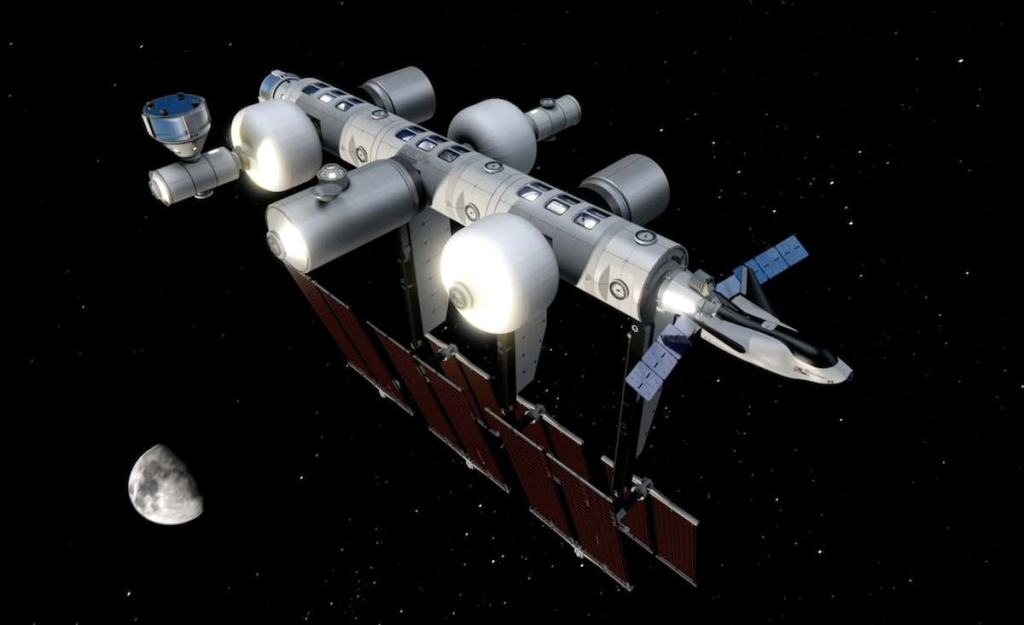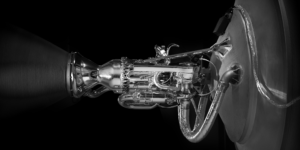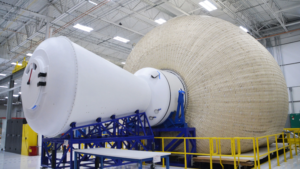
What Progress Has Been Made On Orbital Reef?
While new rockets are being launched and announced by many different companies within the space industry, they are not the only technology being worked on. In reality, there is a host of additional companies and projects that focus on ways to support people in space rather than transport them there. Orbital Reef is a great example and a joint effort between Sierra Space, Blue Origin, and a few other companies.
After a lot of major announcements in 2021, everyone involved has continued to work on the project. This brings up the question of what exactly has been done since then and what is everyone working on. Orbital Reef is intended to increase our access to space and provide a space for unique and one-of-a-kind manufacturing, testing, science, and more.
However, before this space station becomes a reality, a lot of work is needed to ensure every aspect of it is a success. Overall, the project is very ambitious but could change how we look at space and be a catalyst for many great things. Here I will go more in-depth into the recent progress, what is being worked on, and what to expect in the near future.
Recent Progress

With very ambitious projects such as Orbital Reef, a lot of progress is necessary in order for anything to be done in a timely manner. After a lot of big announcements in 2021, the companies involved began to work on some of the aspects of this project. Not long ago in April, Sierra Space tweeted saying, “Breaking: @OrbitalReef, co-led by @SierraSpaceCo and @blueorigin, successfully completed its Systems Requirements Review (SRR), a milestone baselining requirements for the program. #orbitalreef will be the first commercially owned & operated space station.” The SRR is an important program milestone marking the baselining of the requirements for the mission and design of Orbital Reef, a commercially developed, owned, and operated space station to be built in low Earth orbit (LEO).
More specifically, the SRR reviewed Orbital Reef specifications to ensure they reflect the current knowledge of the mission and market requirements to serve as a stable baseline to proceed with development. The Orbital Reef team, including Boeing, Redwire Space, Genesis Engineering Solutions, Amazon Distribution & Fulfillment Solutions, Amazon Web Services and Arizona State University, is maturing the design of its space station in partnership with NASA under the agency’s Commercial Low-Earth Orbit Development (CLDP) program. NASA awarded the agreement in December 2021 to shift NASA’s research and exploration activities in LEO to commercial space stations and help stimulate a growing space economy. The review assessed Orbital Reef’s ability to meet safety and mission requirements and evaluated the technical readiness of the design, the concept of operations, the feasibility of project development plans, and planned verification activities. Representatives from Blue Origin, Sierra Space, team members, and NASA participated in the review, which was conducted virtually.
“At Sierra Space we are building a platform in Space to benefit life on Earth, and forming a catalyst for disruptive technological breakthroughs and innovations that will shape the world of tomorrow,” said Tom Vice, CEO of Sierra Space. “It is clear that having achieved this key program milestone – and the maturity of the system we are building with Blue Origin – that we are a step closer to realizing that vision.” “This SRR is a significant milestone toward commercializing low-Earth orbit,” said Brent Sherwood, Senior Vice President of Advanced Development Programs for Blue Origin. “What’s especially exciting is how the Orbital Reef team is combining NASA’s goals with the needs of others to promote new commercial markets.”
All of which comes after some of the original news back in late 2021. Here, it was announced that Orbital Reef was selected by NASA for a funded Space Act Agreement for collaboration to design a commercially owned and operated space station in low Earth orbit (LEO). NASA’s Commercial LEO Development program aims to shift NASA’s research and exploration activities in LEO to commercial space stations, helping stimulate a growing space economy before the International Space Station is retired.
In addition to some recent progress in terms of reviews, companies like Sierra Space have also made progress on Dream Chaser. This Spaceplane is intended to play a big role in the future of Orbital Reef and transporting humans and cargo to and from the station. Specifically, in recent weeks we have seen the company assemble Dream Chaser Tenacity, in preparation for its first official launch not long from now. Dream Chaser was originally designed as a crewed spaceplane, in part under NASA’s Commercial Crew Program, capable of carrying up to seven astronauts to and from the space station and other low Earth orbit (LEO) destinations. Dream Chaser is 30 feet, or 9 meters long—roughly ¼ the total length of the space shuttle orbiters—and can carry up to seven crew members. The crewed version of Dream Chaser is approximately 85% common to the cargo system, limiting primary changes to windows, environmental control and life support systems. In addition, an integral main propulsion system is available for abort capability and major orbital maneuvers.
Looking at the uncrewed variant, with the help of the Shooting Star service module, Dream Chaser can deliver up to 5,500 kg of pressurized and unpressurized cargo to the space station, including food, water, supplies, and science experiments and returns to Earth. Dream Chaser can return critical cargo at less than 1.5 g’s using a gentle runway landing. In addition, the ability to liftoff on top of multiple launch vehicles and land at a wide variety of runways makes Dream Chaser a flexible option for reliable transportation.
Orbital Reef

Now that we know more about some of the progress this ambitious project has made in recent months, we can take a closer look at the space station itself and the groups involved. Designed to open multiple new markets in space, Orbital Reef is intended to provide anyone with the opportunity to establish their own address on orbit. This unique destination will offer research, industrial, international, and commercial customers the cost competitive end-to-end services they need including space transportation and logistics, space habitation, equipment accommodation, and operations including onboard crew. If everything goes according to plan, the station will start operating in the second half of this decade. Orbital Reef will be operated as a “mixed use business park” in space. Shared infrastructure efficiently supports the proprietary needs of diverse tenants and visitors. It features a human-centered space architecture with world-class services and amenities that is inspiring, practical, and safe. As the premier commercial destination in low Earth orbit, Orbital Reef will provide the essential infrastructure needed to scale economic activity and open new markets in space. Reusable space transportation and smart design, accompanied by advanced automation and logistics, will minimize cost and complexity for both traditional space operators and new arrivals, allowing the widest range of users to pursue their goals. The open system architecture allows any customer or nation to link up and scale to support demand. Module berths, vehicle ports, utilities, and amenities all increase as the market grows.
As partially mentioned prior, this project is led by Blue Origin and Sierra Space, with many additional important partners. This includes Boeing, Redwire Space, Genesis Engineering Solutions, and Arizona State University. Each provides a specific benefit and purpose to the overall mission. “For over sixty years, NASA and other space agencies have developed orbital space flight and space habitation, setting us up for commercial business to take off in this decade,” said Brent Sherwood, Senior Vice President of Advanced Development Programs for Blue Origin. “We will expand access, lower the cost, and provide all the services and amenities needed to normalize space flight. A vibrant business ecosystem will grow in low Earth orbit, generating new discoveries, new products, new entertainments, and global awareness.” “Sierra Space is thrilled to partner with Blue Origin and provide the Dream Chaser spaceplane, the LIFE module, and additional space technologies to open up space for commercial research, manufacturing, and tourism. As a former NASA astronaut, I’ve been waiting for the moment where working and living in space is accessible to more people worldwide, and that moment has arrived,” said Dr. Janet Kavandi, former three time NASA astronaut and Sierra Space president.
Conclusion
It seems like quite a while ago many of the companies involved announced the big news for Orbital Reef. This project is very ambitious and requires everyone involved to work very hard towards the goal in order for it to be a success. In recent months, some of the main progress has been on the Dream Chaser spaceplane and the completion of a Systems Requirement Review back in April. We will have to wait and see how it progresses and the impact it has on the space industry.



